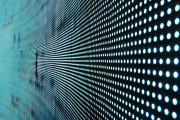 2020-06-17
2020-06-17
Scientists at the Circadian Light Research Center published their new finding in the Journal of Biological Rhythms pointing out the narrow band of blue light that synchronizes our circadian rhythms during the day and disrupts them at night. The study could help lighting fixtures and LEDs to be further engineered and designed to optimize human health.
Blue light exposure at night is a well-established public health hazard. It suppresses melatonin, causes circadian disruption, and is linked to an increased risk of sleep disorders, obesity, diabetes, and breast and prostate can...
Continue reading →
 2019-10-22
2019-10-22
A new study by researchers at Oregon State University suggests that the blue wavelengths produced by LED damage cells in the brain as well as retinas. The study, published today in Aging and Mechanisms of Disease, involved a widely used organism, Drosophila melanogaster, the common fruit fly, an important model organism because of the cellular and developmental mechanisms it shares with other animals and humans. Jaga Giebultowicz, the researcher from the OSU College of Science, has led a research collaboration that examined how flies responded to daily 12-hour exposu...
Continue reading →
 2019-05-24
2019-05-24
Scientists warned that intensive exposure of blue light through heavy usage of electronical devices such as mobile phones and tablets might affect sleeping quality. A new study showed that by limiting or blocking evening exposure to light-emitting screen for one week, sleep quality for teenagers can be improved.
The collaborative study by the Netherlands Institute of Neuroscience, the Amsterdam UMC and the Dutch National Institute for Public Health and the Environment indicates that by simply limiting exposure to blue-light emitting devices in the evening, adolescents can ...
Continue reading →
 2020-06-17
2020-06-17
 2019-10-22
2019-10-22
 2019-05-24
2019-05-24